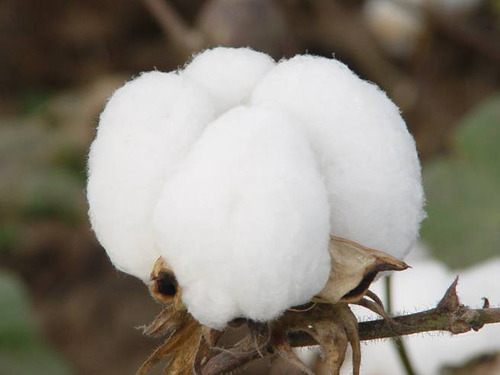
Driven by the cotton target price policy, domestic cotton prices have fallen, and domestic and foreign cotton price gaps have narrowed. The heat of domestic enterprises on imported cotton yarns has gradually faded. From January to June, the total value of textile and apparel imports nationwide was US$ 12.97 billion, which was a year-on-year increase of 2.9%; of which cotton yarn imports accounted for 24.1%, and imports were negative growth, which was a decrease of 0.8% year-on-year to US$ 3.12 billion.
The characteristics of cotton yarn imports in the first half of 2014 are as follows:
1. From January to June 2014, the increase in total imports of cotton yarns in China slowed down significantly.
From January to June, the total imports of cotton yarns totaled 0.988 million tons, an increase of only 2.3%, a significant slowdown from the 45.8% increase in the same period of 2013, and negative growth in the first half of the year. Among them, 181,000 tons in January, down 0.6% year-on-year; imports in February decreased from January to 153,000 tons, but increased by 49.8% compared to the same period in 2013; March imports were 178 million tons, down 10.7% year-on-year; imports in April 18.2 Ten thousand tons, an increase of 11%; in May and June, the import volume hit a record low in 2014, which was 152,000 tons and 141,000 tons respectively, down 11.3% and 3.3% year-on-year respectively.
2. From a single month's perspective, the unit price of imported cotton yarns basically rose in the first half of the year and declined year-on-year.
In the first six months, the average price of cotton yarn imports was US$3.16/kg, down 3.1% year-on-year. The unit price of imports has risen since February 2014. It was US$3.08/kg in February, down 1.2% year-on-year. It was US$3.17/kg in March and April, and the decline rates were 1.5% and 4% respectively; further increase in May. To US$3.18/kg, it was down 4% year-on-year; unit price in June hit a new high this year, at US$3.21/kg, down 2.7% from the same period in 2013.
Third, China's import of cotton yarn from India has slowed down, and imports from Vietnam are enjoying a good momentum.
India, Pakistan, and Vietnam were the top three source markets for cotton yarn imports. In 2014, China’s cotton yarn imports from India slowed down, and imports from Pakistan showed a negative growth. Imports from Vietnam showed a good momentum of growth. From January to June, China’s imports of cotton yarn from India accounted for 29% of total imports, which was 286,000 tons, an increase of 6.6%; the average import price was 3.1 US dollars/kg, down 3.8% year-on-year. Imported 239,000 tons of cotton yarn from Pakistan, accounting for 24.2%, down 20.5% year-on-year; average import price was 2.8 US dollars/kg, down 4.4%. Vietnam ranked third, with imports of 167,000 tons, accounting for 16.9% of the total, and the growth momentum was relatively impressive. The first 6 months increased by 64.5% year-on-year; the average import price was 3.24 USD/kg, down 10.4% year-on-year.
Of the top ten import-source countries, Uzbekistan is the fastest-growing country, with an increase of 115.4% and an import volume of nearly 35,000 tons. The growth rates in Indonesia and South Korea were 41.3% and 8.2%, respectively, and the import volume was 38,000 tons and 16,000 tons, respectively. From January to June, imports from the United States and Thailand were 19,000 tons, a decrease of 40.9% and 4.2% from the same period in 2013.
4. Guangdong is my country's largest importer of cotton yarns, but imports have shown negative growth.
From January to June, there were three major provinces and cities importing more than 100,000 tons of cotton yarns, accounting for 60.9% of the total, of which Guangdong's import growth was negative, imports were 288,000 tons, down 17% year-on-year, and the import unit price was 3.46 US dollars per kg. 0.6%; Zhejiang imports 167,000 tons, an increase of 16.9%, the import price of 2.99 US dollars / kg; Beijing imports 148,000 tons, down 8.5%, the import price of 2.91 US dollars / kg. The imports from Shanghai, Jiangsu, and Shandong were 92,000, 87,000, and 82,000 tons, respectively, and the growth slowed down to 18%, 16.5%, and 31.7%; Fujian imported 51,000 tons, an increase of 7.2%; Anhui, Xinjiang increased respectively. 100% and 127.9%.
Accelerated recovery: Ankle Support provides powerful compression to help improve blood circulation, and provides pain relief from heel stabs, plantar fasciitis, tendinitis and other foot-related discomforts!
Support: The Ankle Support Brace provides compression to help you get the support you need, stabilize the injury and prevent new injuries. Adjustable straps provide you with a sense of exclusive fit and support and keeps you comfortable during high-intensity sports such as football, running, volleyball, basketball and baseball.
Comfort and breathable: Whether you work or run for a long time or just want to keep blood flowing while you sleep, our Ankle Support Sleeve is very comfortable and can be worn anywhere without making your feet bulky and difficult to wear your favorite slippers or running shoes!
Super quality: Our ankle support brace is made of the best neproprene, which can absorb sweat quickly and keep your feet dry and odorless. The inner texture of the ankle support fabric gives you a smooth and soft touch.
Ankle Support
Ankle Support Brace,Ankle Support,Ankle Support Sleeve,Ankle Support For Runners
Shenzhen Hongxiangwen Hook&Loop Co.,Ltd , https://www.hxwsports.com
![<?echo $_SERVER['SERVER_NAME'];?>](/template/twentyseventeen/skin/images/header.jpg)